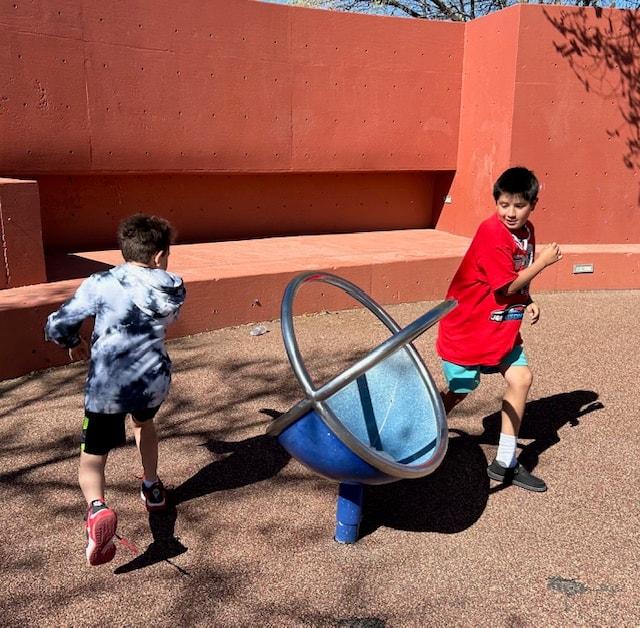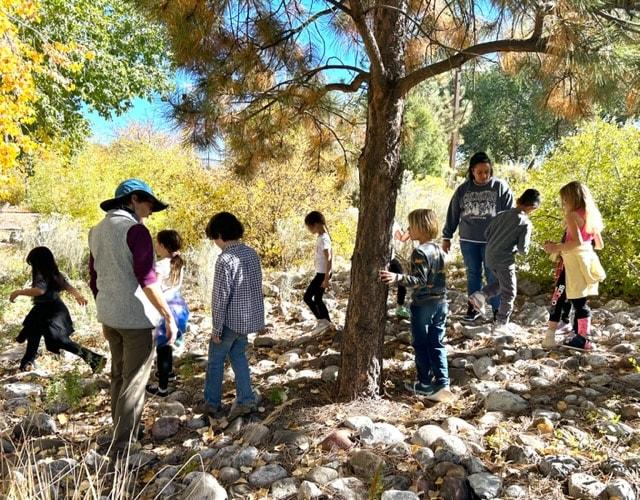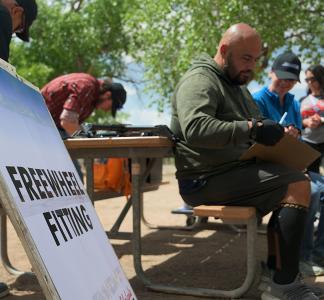Cultivating connections: How the Railyard Park Conservancy is transforming lives through outdoor equity

Santa Fe National Forest, New Mexico
Mason Cummings
This blog was authored by Semilla Strategies in collaboration with Railyard Park Conservancy (RPC) in an effort to spotlight how the Outdoor Equity Fund is helping improve access to the outdoors for youth across New Mexico. We extend our sincerest gratitude to Railyard Park Conservancy and Semilla Strategies for their partnership in this storytelling series.
Nestled in the heart of Santa Fe, the Railyard Park Conservancy (RPC) has long been a beacon of community engagement, environmental stewardship and innovative education. Through its dedication to providing equitable access to nature, the RPC has transformed a once-overlooked space into a thriving hub for discovery, creativity and connection. Central to this transformation has been the support from the New Mexico Outdoor Equity Fund (OEF), which has enabled the Conservancy to deepen its impact, particularly among youth from historically underserved communities.
Planting the seeds of equity
The Railyard Park Conservancy’s mission is to provide community stewardship and advocacy for the care, educational programming and public art in the Railyard Park + Plaza. This 11-acre urban oasis—characterized by drought-tolerant native plants, a pollinator garden and a variety of engaging public spaces—serves as a living laboratory where nature-based education takes center stage.
For Executive Director Izzy Barr, the vision extends far beyond the park’s boundaries. “Our goal is to make nature accessible to everyone, regardless of their background or resources,” she explains. This commitment to equitable access aligns seamlessly with the mission of the Outdoor Equity Fund, which has provided critical funding to support the Conservancy’s educational programs.
The Living Laboratory: Learning through exploration
At the heart of RPC’s educational efforts is the Living Laboratory, a field trip program designed to immerse students in hands-on learning experiences aligned with New Mexico’s science and social studies standards. Activities like “Plant & Pollinator Investigation” and “Compost Creatures” not only engage young minds but also introduces real-world conservation concepts.
Thanks to OEF funding, the Living Laboratory has flourished. In 2023 alone, the program served over 400 students, 46% of whom came from low-income families. By offering bus stipends and covering program costs, RPC has removed significant barriers to participation, ensuring that children who might otherwise lack access to nature can experience the park’s wonders.
“We’ve seen kids’ eyes light up as they dig through compost to find worms or use magnifying glasses to observe native bees in our pollinator garden,” Barr shares, “These experiences spark curiosity and plant the seeds for lifelong environmental stewardship.”

Children learning about the surrounding environment at Railyard Park Conservancy.
Railyard Park Conservancy
The ripple effect of outdoor equity funding
For small nonprofits like the Railyard Park Conservancy, consistent funding is both a lifeline and a catalyst for innovation. The OEF grant has allowed RPC to:
-
Hire skilled educators
With the grant, RPC brought on experienced environmental educators who could deliver high-quality, engaging programming.
-
Develop tailored curriculum
Collaborating with local consultant Molly Parsons, the Conservancy created a comprehensive K-5 curriculum rooted in the park’s unique features, from its compost pile to its native bee house.
-
Ensure accessibility
By funding bus stipends, RPC eliminated a common barrier for schools, ensuring that transportation costs did not prevent participation.
-
Support economic stimulus
Beyond direct program benefits, the grant supported local educators, translators and bus drivers, creating a ripple effect of economic impact.
However, Barr notes that funding limitations in 2023 presented challenges. “We had to scale back some activities and stretch every dollar to maintain program quality,” she explains. Despite these hurdles, the Conservancy’s creativity and resourcefulness ensured that no child’s experience was compromised.
Transforming perspectives through play
The Railyard Park Conservancy’s programs do more than teach science; they transform how children see themselves and their environment. One standout activity, inspired by the book The Lost Words by Robert Macfarlane and Jackie Morris, combines art, poetry and nature.
“We ask children to pick a natural object, like a leaf or a blade of grass, and create an acrostic poem,” Barr says, “It’s a beautiful way for them to connect language, creativity and the natural world.”
This emphasis on interdisciplinary learning fosters a deep appreciation for nature and ignites a sense of belonging. “One of our guiding principles is teaching kids that nature isn’t far away,” Barr explains, “It’s not just up in the mountains; it’s in your backyard, your community park, even the grass beneath your feet.”
Building a community of stewards
For RPC, the impact of its work extends far beyond individual field trips. The Conservancy’s Youth In-Service program, for example, combines community service with job skills development. Projects like acequia maintenance and invasive species removal not only help maintain the park but also instill a sense of ownership and responsibility among participants.
“We’ve seen students return year after year, evolving from curious learners to confident leaders,” Barr shares. “They’re not just visitors; they become stewards of this space.”

Young students in New Mexico during a field trip with Railyard Park Conservancy.
Railyard Park Conservancy
The call for sustainable funding
While the Outdoor Equity Fund has been instrumental in supporting RPC’s programs, Barr emphasizes the need for sustainable, recurring funding to ensure long-term impact.
“This program is vital,” she says, “The research is clear: access to nature improves children’s mental, physical and emotional well-being. Every state should have funding like this as part of their educational programming.”
Looking ahead, RPC is hopeful that increased investment in the OEF will allow it to expand its reach, serve more children and continue providing transformative experiences. With adequate funding, the Conservancy could:
- Increase the number of field trips and participants;
- Develop additional curriculum modules for older students; and
- Enhance infrastructure to support more hands-on activities.
A lasting legacy
The story of the Railyard Park Conservancy is one of resilience, innovation and profound community impact. Through its partnership with the Outdoor Equity Fund, RPC has not only enriched the lives of Santa Fe’s youth but also demonstrated what’s possible when public funding and grassroots dedication align.
“When kids leave the park, they’re not just taking home a worksheet or a memory of a fun day,” Barr reflects. “They’re carrying with them a new perspective on their role in the world and a sense of connection to the environment and their community.”
As New Mexico’s legislators consider the future of the Outdoor Equity Fund, the Railyard Park Conservancy’s story serves as a compelling reminder of what’s at stake. By investing in programs like this, we’re not just funding outdoor education; we’re nurturing the next generation of stewards, leaders and change-makers who will ensure our shared natural heritage thrives for years to come.
From trails to transformation: How Youth Heartline is empowering young lives through the outdoors
Youth Heartline
Restoring connections: How the Asombro Institute and outdoor equity funds are transforming science education in southern New Mexico
Asombro Institute for science education
Championing disability advocacy in Albuquerque
Mason Cummings



